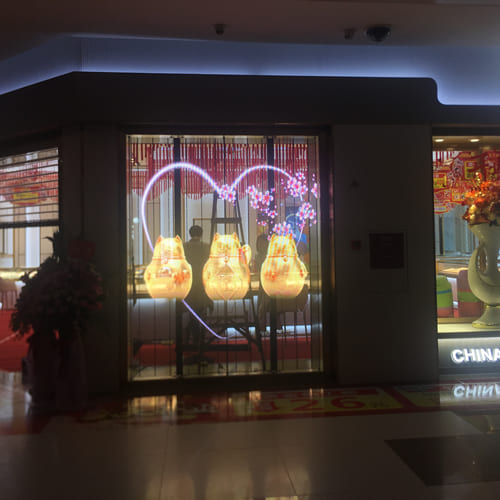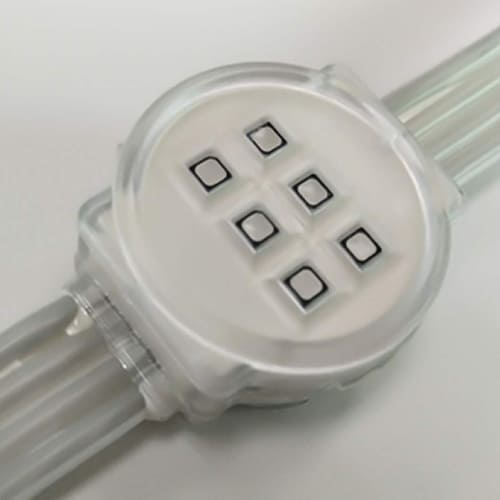How to perform pixel calibration on an LED mesh screen?
Performing pixel calibration on an LED mesh screen requires specialized tools and techniques to address its transparency, irregular module layout, and environmental sensitivity. Follow this professional workflow:
Required Tools
| Equipment | Purpose |
|---|---|
| Spectrometer/Radiometer | Measures brightness/color accuracy (e.g., Klein K10-A, Sekonic C-800) |
| Calibration Camera | High-speed camera for uniformity analysis (optional for mesh screens) |
| Control Software | Vendor-specific software (e.g., NovaStar’s AGSPro, Brompton Tessera Suite) |
| Gray Scale Generator | Test patterns for brightness/color gradation |
Step-by-Step Calibration Process
-
Pre-Calibration Setup
- Stabilize Environment: Ensure consistent ambient light (avoid direct sunlight/shadows).
- Warm-Up: Power on screen for ≥30 mins to stabilize LED temperature.
- Content Prep: Display 50% gray background across the entire mesh.
-
Brightness (Luminance) Calibration
- Measure brightness at 9 points per module (center + edges) using a spectrometer.
- Input data into control software → Generate brightness compensation map.
- Software adjusts drivers to achieve ≤5% brightness deviation across the screen.
-
Color (Chrominance) Calibration
- Display primary colors (RGB) and white (6,500K target).
- Measure color coordinates (CIE x,y) and white balance.
- Adjust gain/offset values per module to match:
- ΔE < 3 (color difference imperceptible to the human eye).
- White balance tolerance: ±150K
-
Transparency Preservation
- Critical for mesh screens:
- Ensure black pixels output 0 nits (preserves transparency).
- Verify no “ghost light” from adjacent LEDs in dark areas.
- Use black insertion algorithms if software supports it.
- Critical for mesh screens:
-
Gamma Curve Alignment
- Display 11-step grayscale (0~100% brightness).
- Correct gamma curves to achieve smooth gradients without banding.
Mesh-Specific Challenges & Solutions
| Issue | Solution |
|---|---|
| Varying Transparency | Calibrate with backing removed (simulate final install conditions). |
| Module Gaps | Ignore gaps – focus calibration strictly on LED clusters. |
| Flexible Curvature | Calibrate after final installation (bending affects LED angles/output). |
| Outdoor Interference | Perform at night or use calibrated shields to block ambient light. |
Post-Calibration Validation
- Test Patterns:
- Uniformity grid (check for dark/bright patches).
- Color gradients (e.g., smooth transitions from red→yellow).
- Real-Content Test:
- Play high-contrast videos to detect color smearing or flicker.
- Verify black areas remain transparent from behind.
- Data Logging:
- Save calibration profile (reapply after module replacements).
- Document ΔE/luminance values for future comparisons.
Pro Tips
- Batch Matching: Use modules from the same production batch to minimize pre-calibration variance.
- Automation: Advanced systems (e.g., Brompton) offer auto-calibration via connected spectrometers.
- Frequency: Calibrate every 6 months (indoor) or 3 months (outdoor/high-usage).
- Burn-In Prevention: After calibration, run a pixel-refresh cycle (clears residual voltage).
Common Mistakes to Avoid
❌ Using camera-based systems: Non-uniform gaps confuse optical calibration.
❌ Calibrating indoors for outdoor screens: Daylight nits differ dramatically.
❌ Skipping module-level adjustments: Mesh screens often have higher variance than solid walls.
❌ Ignoring thermal drift: Calibrate at typical operating temperature (e.g., 25°C).
⚠️ Safety First: For overhead mesh screens, use boom lifts/rigging – never calibrate while dangling from harnesses!
When to Call Professionals
Seek expert help if:
- Post-calibration ΔE > 5 or brightness deviation > 15%.
- Physical damage (bent pins, cracked LEDs) affects calibration.
- Screen uses hybrid technologies (e.g., mesh + traditional LEDs).
Vendors like Leyard/Absen offer calibration services (~$15–30/m²) with certified tools and environmental simulators.
 Outdoor LED Display Panel Price
Outdoor LED Display Panel Price
 What professional LED pixel calibration tools are there?
What professional LED pixel calibration tools are there?
 How to maintain an LED mesh screen?
How to maintain an LED mesh screen?
 How to choose the right LED mesh screen?
How to choose the right LED mesh screen?
